Touring Cape Breton and the Cabot Trail
All these amazing vistas are beginning to run together— one beautiful area after another. We want to come back to spend more time and not rush so much. We feel like we need to take more time to soak in all we are seeing.
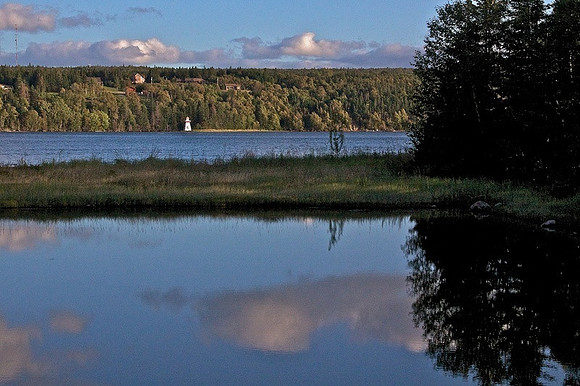

We stop at an RV camp at the foot of Kelly’s Mountain on Boulardere Island looking out on the Bras d’Or Lake. This lake is an inland sea with channels that connect the Cabot Straight to the Atlantic Ocean. Up to 31 miles wide and 62 miles long, we stayed at the foot of the dramatic Seal Island Bridge, connecting our chunk of land to New Harris, Cape Breton to the north. White an red lighthouses stand sentry at the waters edge all over the area.
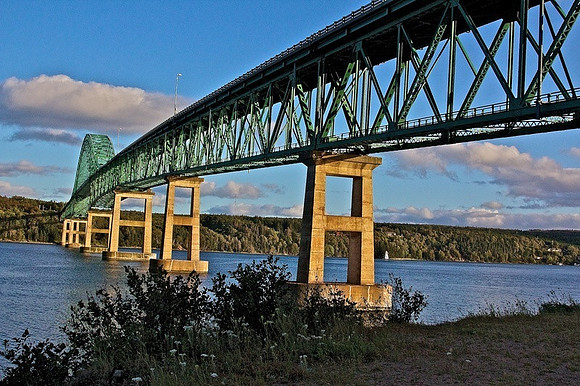

We were here on September 17th 2011 and we were treated to hundreds of motorcycles roaring by as they participated in Canada’s Gord's Race for the Cure. The 185 mile ride on the Cabot Trail and began early in the morning in a cold rain. Great cause in nasty conditions.


We decided to take a down day and hope for better weather before driving the Cabot Trail ourselves. I headed out to Beddeck to see the local area. (I was hoping to find some displays from the Mi’kmaq First Nation. No Luck. Their only shop was closed and covered with addiction information.)
Instead, I found a real treasure, Beddeck.
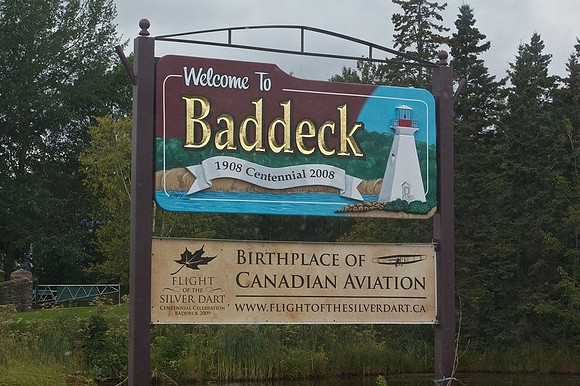

Beddeck has quite a history. It is the birthplace of Canadian aviation—and the first powered flight in the British Empire-- with the flight of Alexander Graham Bell’s AEA Silver Dart. This was Bell’s summer home and the site of his laboratory and much of his experiments, including those on the tretrahedral kite.


I visited the monument built to Bell's many legacies and found a celebration of Celtic music and an afternoon Ceilidh (story and music party).


This place is a tribute to Bell's life; his quote from 1922 seems particularly ahead of its time…


The peaceful Beddeck Harbor centered around another lighthouse. I stayed a while just to enjoy the serenity.


The next day we had great weather as we headed out on the Cabot Trail. The breathtaking views just keep on coming! The Trail rings the northern tip of Cape Breton Island and our drive begins overlooking the Bras d'Or and Ingonish from St. Ann’s Lookoff.
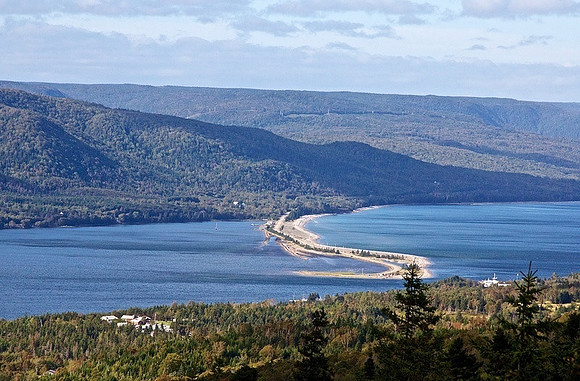

We travel down the mountain to begin our drive.


Soon we got a bird's eye view of the spectacular countryside at Camp Smokey Picnic Park. We hike, absorb the view and pick blueberries.




Then we arrive at Ingonish


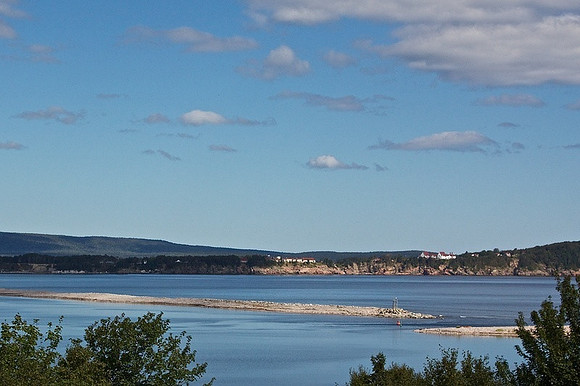

Continue on to Lakies Head.


Further on, Neil’s Harbor and Whites Point are big lobster fishing areas.
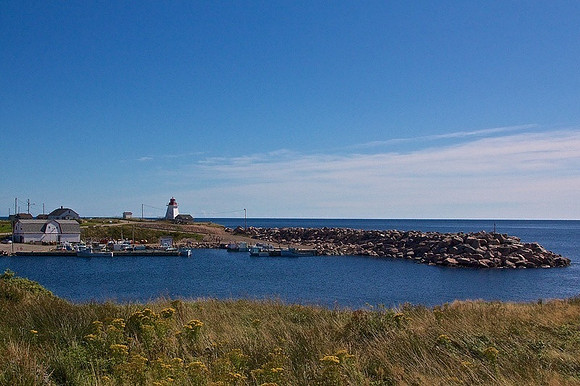



Smelt Brook gave us another great view of the meeting of land and sea.


The road stretched out forever through the Cape Breton Highlands until we reached the Gulf of St. Lawrence at Pleasant Bay.


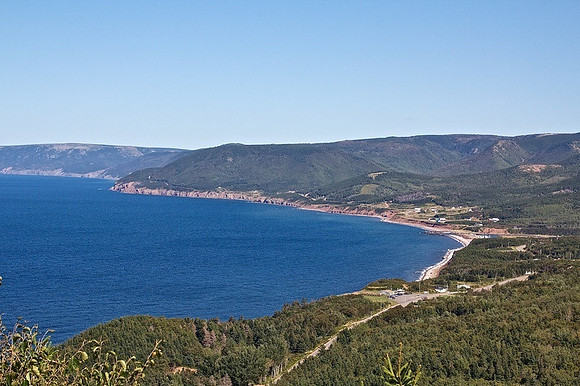

On a rocky beach heading toward Chéticamp, we found a cairn that looked much like the Inuksuk stones we saw on Hudson Bay north of Winnipeg.


And, yes, another amazing glacier carved landscape combining the earth, water and sky that has mesmerized us here.


We finally reach the Arcadian village of Chéticamp. One of the houses really caught our eye.
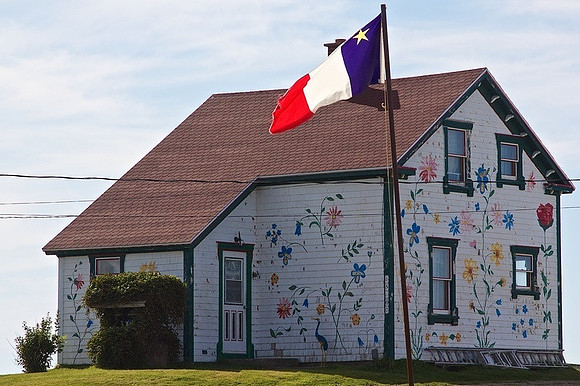

The Arcadian culture grew from 17th-century French colonists who settled in the eastern Maritime provinces and part of Maine. British and New England legislatures organized the “Great Expulsion” carried out in the late 1750’s. During this time, these people of the colony of New France were brutally moved to Louisiana. Their descendants are the current day Cajuns.
The Arcadian St. Pierre Church stands over the town.


Our final stop on the Cabot Trail was Joe’s Scarecrow Village at Cap le Moine. What started as an effort to keep crows out of a garden has become an elaborate Cabot Trail landmark. Margaret Thatcher, Ronald Regan, Nixon, and all manner of over 50 other scarecrows now watch over a very odd open field.




No one there, just the scarecrows created by Joe, the owner, who was fascinated by Mi-Careme, the francophone mid-Lent celebration where revelers party in grotesque costumes.
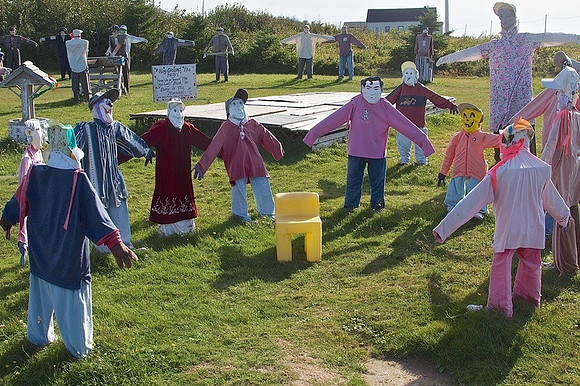

We joined the fun.




Tomorrow, we’ll pull up stakes—actually pack up the RV—and head to New Brunswick and try to catch the 60 foot tides at the Bay of Fundy. This will be our last Canadian stop before we head back to the States.